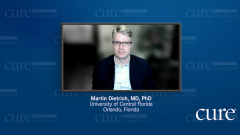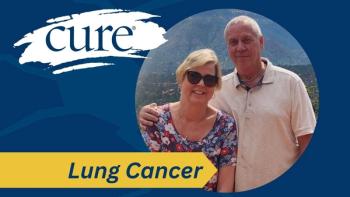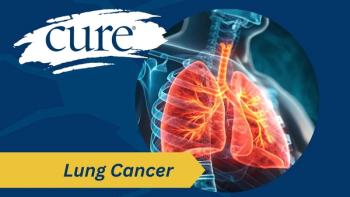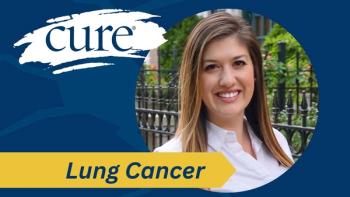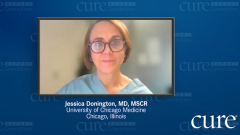
Selecting Appropriate Adjuvant Therapies for Early Non-Small Cell Lung Cancer
Dr. Martin Dietrich reviews some factors to consider when selecting an adjuvant therapy for early non-small cell lung cancer.
Episodes in this series

Martin Dietrich, M.D., Ph.D.: Moving into the next, bigger setting, I want to talk about what the role of medical oncology and the role of surgery would be to determine what a patient is suitable for. There’s sometimes a difference between how a patient feels and how a patient really does. We can use a lot of markers for looking at this. Obviously, if you had a big surgery and you had some pain and some blood loss, nobody would feel 100%. That’s very understandable. But it’s part of our job, and I always claim this with pride, to be a cheerleader for patients to do the necessary thing when a treatment is up next. Again, we have a bit of time for recovery, but in the end, we want to get started, and I think the closer to surgery, the better overall. Three months would be my absolute limit. Typically, I’m aiming at about six weeks for start of therapy afterward. And I do agree, if a patient can undergo lymph node evaluation and a lobectomy, they’re typically strong enough for chemotherapy.
We do have to tailor the amount of support that we provide. I have patients, for example, who may not be eating and drinking as much after chemotherapy. I’m bringing them back to the infusion area to just get normal saline, to get fluids and be supported and help them wash the chemotherapy out of their system and remain strong for the next couple of days. The supportive care part cannot be overdone. I want to say the interactions with the nurses and the care team oftentimes reveal things that are quite important. I also want to say…with surgery you have a very clear attack plan, when you make your incision, how you go in, what the strategies are. Chemotherapy is an uncharted journey. Other than the four dates of chemotherapy every three weeks, a lot of the things happen in between are very individual. It’s sometimes a question of how well the patients tolerate it, the degree of adverse effects are unpredictable, and who’s affected by what adverse effects has to be tailored. We like to have a patient back within a couple of days just to see how they’re doing and what their needs are, what their challenges are for tolerating chemotherapy, and try to keep an open mind. Typically, you learn how to manage chemotherapy after cycles one, two, three and four, and while the adverse effects may be building up, your skill level of managing chemotherapy can make up for this. Four cycles is a reasonable idea.
Looking at the marker testing, this is a very important part that you would think of as a step-by-step process. Obviously the first step and the focus in the beginning is surgery. I agree that you have to have a little bit of a long- and a short-term perspective. But I do say the first step is surgery and its recovery. This includes oftentimes the placement of a mediport to segue into the next step of chemotherapy. But then after recovery, it’s focusing on chapter two. Each of these preparation steps are paving the way into going into chemotherapy. While we’re giving chemotherapy, we can initiate the molecular testing and decide what the next steps are going to be. But I always tell my patients, with chemotherapy, you don’t want to plan the third step before the first because you never know what’s going to happen. We do want to be flexible and not commit a patient to a sentence. This is a step-by-step decision-making process.
One thing that patients have to understand is that even though you consent to chemotherapy in the beginning, that doesn’t mean that you have to do the full treatment course. There’s always an out. If you say, “This is too much, I can’t tolerate it,” we’re not able to continue it. Then you can still take advantage of EGFR targeting and immunotherapy afterward. We already talked about the individual patient population. You can have two patients who by imaging and upfront surgery may look very much alike, and their follow-up steps may be completely different. There’s no one-size-fits-all, as we call it, anymore. It’s a tailored approach where your individual person and your individual tumor’s biology are merged into a process that eventually guides us to make the best recommendation for treatment.
The progress is great; the scare of early stage disease and its recurrence has been significantly lessened. We just have to decide what treatments we’re using. There are other modalities, there are other mutations that we’re looking at for therapy here, using chemotherapy plus immunotherapy before surgery to make surgery easier. But also we look at other mutations afterward. EGFR is the most common one, which is why we are using it. It’s also well tolerated. The three years are typically a very good balance between adverse effects and usefulness. But there are other mutations, and they may not be approved by the FDA yet, but they’re widely available in clinical trials sponsored by the National Cancer Institute and other places. Those are always options that I would encourage because the concept of EGFR targeting is just opening the door for many other mutations for which we have similar expectations to pursue treatment in a very similar way. I would say expect individualization.
There’s no more standard approach to lung cancer. There are certain decision-making steps that may be overlapping, but in the end, you have a very broad set of opportunities for how to be treated. I would encourage you to have that explained to you. If you feel like you’re not understanding this, or the health care provider doesn’t phrase it in a way that you feel comfortable with, I think it’s always encouraged to seek another opinion to have confirmatory information. You never want to rely on one opinion if you’re not comfortable. My opinion, out in the open, I feel like if you have a reasonable plan offered, there should be a fair discussion to have this verified by another provider. Oftentimes, it can be done by telemedicine these days; many places are offering this. This might be something that can be done from the comfort of your home, because the decision-making points are largely available on the table.
Those are my thoughts on adjuvant therapy. I do have to say, my encouragement should include the plea for patients, the plea for the long game in lung cancer. You have a surgery as the opening bell to a curative-intent approach to cancer. That is an opportunity where we can’t afford to run out of steam. We want to drive this, even though at some point, I understand, it’s too much, you want to be done. I think there are plenty of good reasons to see this through to the best extent possible and optimize your outcomes.
Transcript edited for clarity.

